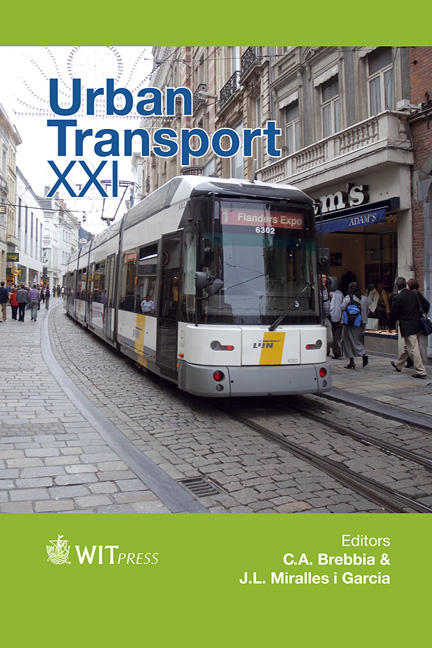Approach To Simulation Assessment Of Area-wide Traffic Calming In The Context Of Sustainable Development
Price
Free (open access)
Transaction
Volume
146
Pages
13
Page Range
191 - 203
Published
2015
Size
856 kb
Paper DOI
10.2495/UT150151
Copyright
WIT Press
Author(s)
A. Książek
Abstract
The introduction of traffic calming in city centre areas is one of the measures aimed at implementing the transport policy which is based on the principles of sustainable development. Traffic calming refers to a combination of road network planning and engineering measures to reduce negative effects of motor vehicle use and improve conditions for non-motorized street users. However, it should not be seen exclusively as a means of introducing traffic restrictions or reducing the speed limit. Comprehensive schemes of area-wide traffic calming result in a synergy effect improving not only traffic conditions but also liveability, environment, safety and the urban landscape. However, one has to emphasize that what is crucial for making use of the capabilities of a comprehensive traffic calming scheme is the proper preparation of the investment. Implementing the ideas of traffic calming should bring the best results in enhancing sustainable safety of drivers and pedestrians, improving the quality of urban life and reducing traffic flows and undesirable effects, such as traffic noise and pollutant emissions. The paper contains a literature review on impacts and effectiveness of area-wide traffic calming solutions. An exemplary approach illustrating how to include traffic calming zones in simulation modelling is also presented. The suggested approach involves the use of simulation tools in both micro and macro scale and tests with a driving simulator to assess the influence of traffic calming measures on speeds, travel times, route choices, modal split and therefore on the level of road safety, traffic noise and air pollution. The influence of individual measures examined at a microscopic level allows one to assess the functioning of the whole transport system at the macro level. This makes it possible to plan the transport service of the area, to reduce congestion and migration of disruptions onto other network links as well as to prepare a proper assessment of functional effectiveness of implemented solutions.
Keywords
traffic calming, sustainable transportation, traffic modelling, urban traffic, driving simulator





